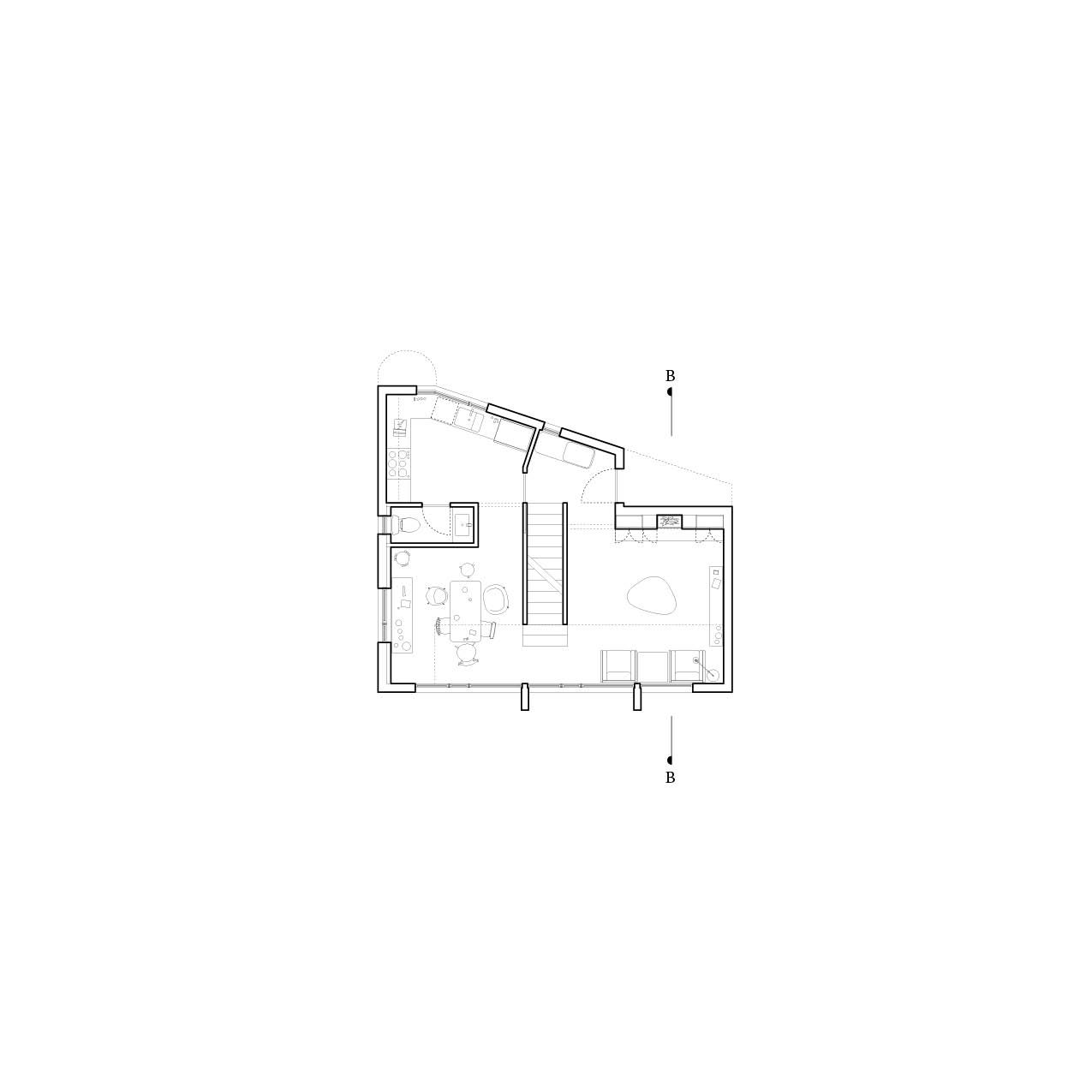twin court
twin court
Small Lots, Big Impacts design competition - winner, gentle density | site A
Year: 2025
Type: residential
Location: Los Angeles , CA
Year: 2025
Type: residential
Location: Los Angeles , CA

Driven by the premise of the competition in response to California’s ongoing housing crisis, the project acknowledges that the solution lies beyond architecture alone — it requires coordinated efforts in policy, planning, and implementation. As a contribution to this broader initiative, the project is not proposed as a universal solution, but rather as a case study that responds to the opportunities and challenges of revised zoning, hillside topography, and the tension between evolving lifestyles and the enduring social codes of domestic life.
The project revisits the historic bungalow court, a vernacular typology native to Southern California, as a framework for compact living. Situated on an RD2-1 lot, the site is divided front-to-back into two separate parcels, each hosting a primary residence and an ADU, organized around a courtyard. This model preserves individual homeownership, which is still a deeply held aspiration for many, while supporting density and enabling multigenerational or interdependent living through discrete yet proximate dwellings.










Rather than adopt a congregate or co-living ownership model, the design engages the persistent cultural imprint of the 6 or 8 room house — a spatial template that continues to define the American sense of home. Twin Court reimagines this model through a compact, efficient layout: each residence contains 4–5 flexible rooms, where traditional boundaries (such as between kitchen and dining) are softened or erased. Kitchens are pulled toward the courtyard, inverting the typical backyard relationship, reinforcing the courtyard’s role as a shared heart of the home, fostering collective living without sacrificing autonomy.
Stepping gable roofs reconcile the relationship between the sloped site and building height while directing rainwater toward garden beds. CLT construction is proposed for its economy, domestic supply, and sustainability, with regionally sourced finishes to reduce environmental and economical impact. Twin Court is not a formal reinvention, but a careful recalibration of how modest housing can support contemporary patterns of living — individual yet interconnected, efficient yet generous.